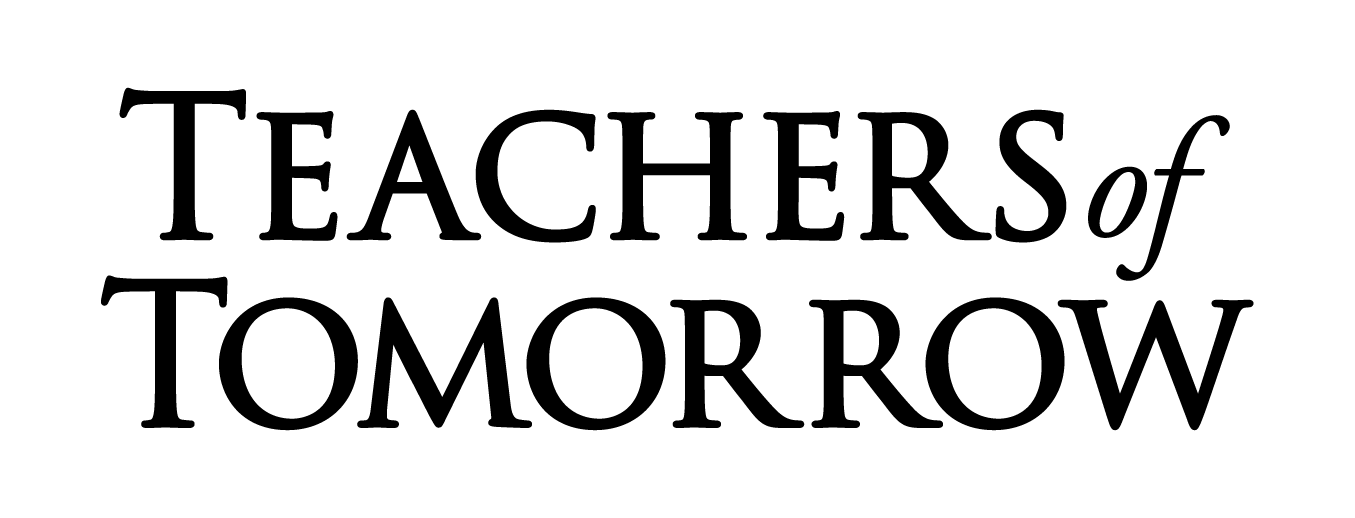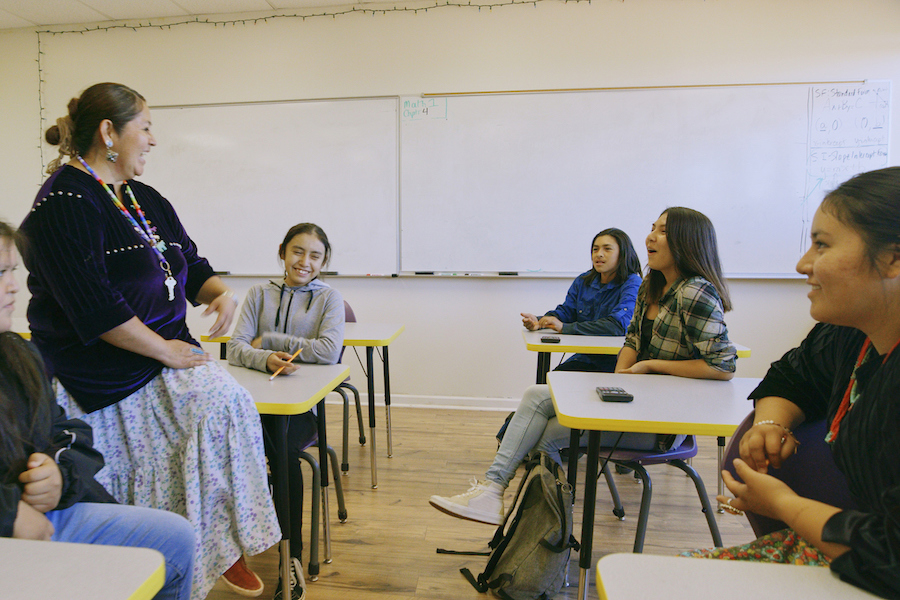To become a teacher, you must complete a bachelor’s degree and obtain a teacher certification or license. You must also be passionate about working with students and seeing them learn and develop.
Teachers play a critical role in shaping the future and helping students succeed. They’re incredibly important for education, inspiration, guidance, societal impact, and personal development.
Today, we’ll look at the different classes teachers take in teacher education programs and how they prepare the future educators for success.
Whether you’re a prospective teacher or simply interested in the field of education, this article will provide insight into the coursework and exams required to become an effective teacher.
How to Become a Teacher?
There are certain requirements that you must meet to become a teacher. You may choose the traditional way, beginning with getting a bachelor’s degree in education and then a teacher preparation program.

You can also take the alternative method to become a teacher even without a bachelor’s degree in education. All you need is a bachelor’s degree in a particular subject, then go through a teacher preparation program and other state requirements to become a certified teacher.
Let’s look at the steps to becoming a teacher closely.
1. Get a bachelor’s degree.
The first step to becoming a teacher is to obtain a bachelor’s degree in education or a related field.
The degree program will provide you with the foundational knowledge of teaching principles, educational psychology, and teaching methods.
2. Participate in student teaching.
Participating in student teaching, also known as the teacher preparation program, is an important and mandatory step toward becoming a teacher. It provides you with practical classroom experience under the supervision of an experienced teacher.
During student teaching, you will have the opportunity to observe and work closely with a mentor teacher. You’ll be assigned to a classroom and responsible for planning and delivering lessons, assessing student progress, and managing classroom behavior.
Student teaching helps you gain valuable insights into the profession and learn how to manage a classroom effectively.
3. Get certified.
Once you have completed your teacher training, you’ll need to obtain a teaching certification to work as a teacher in public schools.
The requirements for obtaining a teaching certification vary by state, so it’s important to research the requirements for your specific state.
To begin the certification process, you must apply for a teaching certificate through your state’s department of education.
Before you can be certified to teach, you’ll need to complete a background check to ensure that you are eligible to work with children. You may also be required to pass a series of exams to demonstrate your knowledge of teaching principles and methods
Once you have met all of the requirements for certification, you’ll receive your teaching certificate. This certificate will allow you to apply for teaching positions in public schools in your state.
4. Create your resume.
Once you’ve received your teaching certificate, you must create a resume to send along with job applications.
Your resume should highlight your education, skills, and relevant experience to showcase your qualifications as a teacher.
Remember, your resume is often the first impression you will make on a potential employer, so take the time to make it strong and professional. A well-crafted resume can help you stand out from other candidates and increase your chances of landing a teaching job.
5. Start applying for teaching jobs.
Armed with a teaching certificate, and a good resume, you can now start to apply for teaching jobs in your state.
Look for teaching job postings on job boards, school district websites, and online resources such as LinkedIn and Glassdoor. You can also network with colleagues and attend job fairs to learn about available positions.
Applying for teaching jobs can be a competitive process. Preparing a strong application and being persistent in your job search can increase your chances of finding a job that’s a good fit for your skills and qualifications.
Teaching Degrees Options
There are several teaching degree options for prospective teachers. The one you choose is highly determined by your school district’s requirements.
States and school districts with teacher shortages normally have fewer requirements because they’re trying to fill the teaching positions.
Before you choose a teaching degree program, you should check your state’s requirements.
Associate’s Degrees in Education
An associate degree in education is a two-year undergraduate degree. It provides students with a solid foundation necessary to pursue a career in education.
The teaching degree program helps aspiring teachers gain valuable experience working with children and adolescents. It includes courses in education theory, child development, teaching methods, curriculum design, and educational psychology.
Graduates with an associate degree in education may find employment opportunities in early childhood education, become teacher assistants, or daycare providers.
Some graduates may also choose to continue their education by transferring to a four-year college or university to complete a bachelor’s degree in education.
Bachelor’s Degree in Education
A bachelor’s degree in education is a four-year undergraduate program that provides students with an in-depth understanding of the theory and practice of education.
The program includes courses in education theory, pedagogy, curriculum development, educational psychology, and classroom management.
Graduates with a bachelor’s degree in education may find employment opportunities as:
- Classroom teachers,
- Curriculum developers,
- Education consultants, or
- Educational administrators in K-12 schools, colleges, or universities
They may also pursue graduate studies in education, such as a master’s degree or a Ph.D., to deepen their knowledge and expertise in a specific area of education.
Master’s Degree in Education
A master’s degree in education is a graduate-level program that provides students with advanced knowledge and skills in education.
The degree program requires two years of full-time study. It’s designed for individuals who have already completed a bachelor’s degree in education or a related field.
The curriculum for a master’s degree in education covers courses in educational theory, research methods, curriculum development, instructional design, assessment, and educational leadership.
Students of the program can also specialize in a particular area of education, such as special education, literacy, or technology integration.
In addition to coursework, students in a master’s degree in education program complete a research project or thesis that demonstrates their mastery of the knowledge and skills learned in the program.
Many programs also include an internship component, which allows students to gain hands-on experience in a classroom or educational setting.
Graduates of a master’s degree in education program may pursue careers as classroom teachers, curriculum specialists, educational administrators, instructional designers, or researchers.
The degree can also prepare individuals for leadership roles in educational organizations and policy-making positions.
Doctoral Degree in Education
A doctoral degree in education is the highest level of academic achievement in the field of education. It’s designed for individuals who want to pursue advanced research, scholarship, and leadership in the field of education.
The degree program takes three to five years of full-time study to complete and requires students to have already earned a master’s degree in education or a related field.
A doctoral degree in education curriculum includes advanced courses in research methodology, statistics, educational theory, policy analysis, and leadership.
Students are also required to complete a dissertation, which is a significant research project that contributes to the field of education.
Students in a doctoral program in education may specialize in a particular area of education, such as educational psychology, curriculum, and instruction, special education, or educational leadership.
They may also have opportunities to collaborate with faculty members or other researchers in the field.
Graduates of a doctoral program in education are well-equipped to pursue careers in academia as professors or researchers.
They can also work as educational leaders in schools, districts, or government agencies, or as consultants or analysts in the field of education policy.
Classes for Future Teachers
As teachers pursue different degree programs, they take different classes that help prepare them for teaching in a classroom setting.
These classes differ based on the chosen program and subject. Next, we discuss the most common classes in teacher education.
Child Development
Child development is a critical area of study in a teaching degree program. This class would be in a teaching degree program focusing on early childhood, elementary, or special education.
In a child development class, students learn about children’s physical, cognitive, social, and emotional development from infancy to adolescence.
Some of the topics students cover include:
- Theories of child development,
- Development of motor skills, language, and cognitive abilities during infancy.
- The social and emotional development of children during the preschool years
- Cognitive and social development of children during the elementary school years
- Adolescence and social changes that occur during adolescence
Core Content Classes
Core content classes are courses that cover the fundamental knowledge and skills required for effective teaching in a particular subject area.
The core content classes required in a teaching degree program can vary depending on the program and the subject area.
For example, core content classes in mathematics education cover topics such as number sense, geometry, algebra, calculus, and statistics.
On the other hand, core content classes in science education cover biology, chemistry, physics, earth science, and environmental science.
These courses provide students with a deep understanding of the subject’s concepts and how to teach them effectively to students of different ages and abilities.
Planning, Instruction, and Assessment
In teacher education, planning, instruction, and assessment classes are essential components of the curriculum.
These classes help future teachers understand the principles of curriculum design and lesson planning. They also learn how to deliver effective instruction in a classroom and various assessment methods
Together, planning, instruction, and assessment classes provide future teachers with the knowledge and skills they need to create effective learning experiences for their future students.
Child Psychology
A child psychology class provides future teachers with a solid understanding of child development and its relation to learning and behavior.
This helps teachers understand how to meet the needs of diverse learners, create a positive classroom environment, and address behavioral challenges.
In a child psychology class, students learn about children’s cognitive, social, emotional, and physical development from birth to adolescence. They also learn about the impact of family, culture, and socio-economic status on child development.
Additionally, students in a child psychology class learn about the factors that influence motivation and learning in children.
They also learn about the importance of creating a positive classroom environment, building relationships with students, and using positive reinforcement to encourage appropriate behavior.
Testing Requirements for Teachers
Before you become a certified teacher in your state, you must first prove your skills. You do this by passing specific exams as required by your state.
The exams differ by state. The following are the most common ones.

Praxis Serie Exams
The Praxis Series exams are tests designed to assess the knowledge and skills of individuals seeking to become licensed teachers or educational professionals.
These exams are developed and administered by the Educational Testing Service (ETS). 43 states have them as a requirement for licensure or certification.
The Praxis Series exams consist of multiple-choice questions, essays, and other types of assessments. They are computer-based, although some paper-based tests are available.
Praxis Subject Assessments
Praxis Subject Assessments are tests designed to assess the knowledge and skills of individuals seeking certification or licensure in specific subject areas.
There are a variety of Praxis Subject Assessments for various subject areas. For example, mathematics, English, science, social studies, etc.
These exams are taken by individuals who have completed their teacher education program and are seeking certification in a specific subject area.
They’re designed to measure a candidate’s understanding of the content area and their ability to apply that knowledge in a teaching environment.
The exams cost $50 to $150, depending on the subject.
Praxis Principles of Learning and Teaching
The Praxis Principles of Learning and Teaching (PLT) is an exam designed to assess an educator’s ability to teach learners in grades K–12.
The exams are classified as follows:
- PLT Early Childhood
- PLT Grade K–6
- PLT Grades 5–9
- PLT Grades PreK–12
- PLT Grades 7–12
The exam is required in most states as part of the teacher certification process. Candidates taking the exam must have completed an undergraduate education program.
The PLT exams are computer-based and take around two hours to complete. They cost $156 each.
Praxis Content Knowledge for Teaching (CKT) Test
The Praxis Content Knowledge for Teaching (CKT) exam is designed to measure a teacher’s elementary education subject knowledge and ability to use that knowledge.
The exam is designed for educators seeking a generalist elementary school certification. It assesses how they apply their content knowledge to everyday teaching tasks.
There are four CKT subtests—Mathematics, Science, Social Studies, and Reading and Language Arts. Candidates can take them each separately or as a combined test which.
The exam is computer-delivered and costs $209. If you opt to take the subjects separately, it will cost you $78 each for Math and Reading and Language Arts and $64 each for Science and social studies.
Tips for Getting Hired as a Teacher
Once you’ve met all the requirements, you want to get hired as fast as possible. Here are some tips to help you start off your teaching career.
- Begin the search: You can search for jobs on school district websites in your area, your state department of education websites, and online job boards that specialize in education jobs, such as Education America and K12JobSpot.
- Join a professional organization and network: Join a professional organization in your field, such as the National Education Association or the American Federation of Teachers. It can help with networking with fellow educators and also provide access to job postings and other career resources.
- Do volunteer work: Taking up volunteering opportunities such as tutoring, mentoring, leading after-school programs, or serving as a classroom assistant can help you find opportunities as soon as they’re available. It’ll also help you gain teaching experience.
- Practice interviewing: Practice interviewing can help you develop your communication skills and build your confidence in speaking about yourself and your qualifications. Find a friend who can give you feedback and provide you with constructive criticism and suggest areas where you can improve.
- Upgrade your knowledge: Upgrading your knowledge helps you improve your teaching skills and keep up-to-date with new teaching methods, techniques, and approaches. This makes you a better job seeker, and you stand a higher chance at being selected for a teaching job.
Job Outlook for Teachers
According to the Bureau of Labor Statistics, employment of high school teachers is set to grow by 5% from 2021 to 2031.
The overall employment of kindergarten and elementary school teachers is also projected to grow by 4% in the same period.
The increased demand for teachers is caused by the growing student populations, retirement of current teachers, and teacher shortages in STEM subjects.
This presents an opportunity for those interested in a teaching career to pursue education and training to become teachers.
Educate Yourself to Educate Others
The field of education is constantly evolving, and teachers need to stay up to date with new educational standards and adapt to new teaching methods.
Educating yourself is important because it keeps enhancing your communication, classroom management, and assessment skills.
You should explore different certification options because you will only be able to teach with a certificate.
By investing in your own education, you’ll provide your students with the best possible education and help them succeed both in and out of the classroom.





